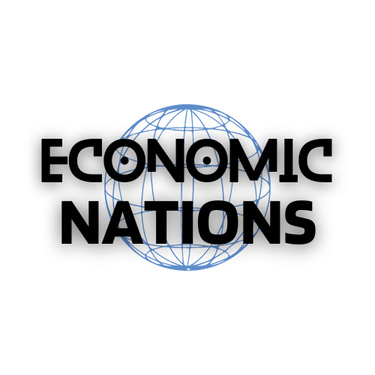Global Energy Shift: Geopolitics, Rare Elements, and the Path to Net-Zero
Embark on a journey through the complex terrain of global energy transition, exploring the interplay of geopolitics, the strategic role of rare earth elements, and the imperatives driving the pursuit of a sustainable net-zero future. Uncover the challenges, opportunities, and collaborative strategies shaping our evolving global energy landscape.
The Economy Council
12/19/20235 min read


The world stands at the crossroads of a transformative journey –
the shift towards renewable energy to achieve net-zero emissions. Recent multilateral events, notably COP28 in Dubai, have underscored the urgency and complexity of this endeavor. This article seeks to provide a nuanced, expert analysis of the myriad challenges, geopolitical intricacies, and economic imperatives associated with the global call for a net-zero future. We will explore the multifaceted dimensions of this transition, drawing insights from the evolving geopolitical landscape, the critical role of rare earth elements (REEs), the economic conundrum faced by oil-dependent states, and the impending shortage of critical minerals. Additionally, we will delve into the significance of global collaboration and technology transfer as essential components in navigating this intricate path toward a sustainable energy future.
The Rare Earth Element Conundrum
Rare earth elements (REEs), often dubbed the "crude oil of the 21st century," have emerged as linchpins in the global push for renewable energy. The COP28 agreement to triple the use of renewable energy by 2030 places a spotlight on the indispensability of REEs in powering green industries and emerging technologies. With their substantial share of global REE reserves, Central Asia and Mongolia are positioned as potential key players in this unfolding narrative.
The geopolitical implications are reminiscent of the 20th-century struggles over crude oil. The region, sandwiched between major powers like Russia, China, and India, presents a complex geopolitical landscape. With Russia and China vying for influence and the West seeking access to critical resources, Central Asia becomes a focal point for global competition. Strategic moves by Kazakhstan, the largest REE producer in the region, to assert its capability to provide critical raw materials to the European Union further intensify this geopolitical chessboard.
However, the West's hesitancy and relative lack of attention to Central Asia's REEs create an opening for geopolitical maneuvering by Russia and China. The urgent need for Western involvement and investment in the region is paramount to ensure a balanced and sustainable global energy transition.
The BRICS Perspective
Beyond regional dynamics, the energy transition resonates within groups like BRICS, where economic aspirations intersect with environmental commitments. Russia's proposal to unite BRICS under the banner of the energy transition exemplifies the intricate interplay between economic goals and environmental responsibilities. While India showcases major ambitions in the transition space, the reluctance of China and India to fully embrace the COP28 pledge highlights the challenges of harmonizing environmental objectives with economic realities, especially concerning coal.
The economic ramifications of transitioning away from fossil fuels extend beyond geopolitical struggles. Over 20 countries dependent on oil and gas revenues face the prospect of a 50% reduction in funds, posing significant risks to their economies and stability. This economic conundrum underscores the need for robust international support to facilitate an effective and equitable transition, especially for oil-dependent states in Africa and other vulnerable regions.


The Critical Minerals Shortage
As the world races towards net-zero emissions, another formidable challenge emerges – the potential shortage of critical minerals by 2030. Historical underinvestment in mining and exploration, coupled with supply chain disruptions, poses a significant threat to achieving short-term climate goals and could drive further price volatility. The complex nature of these minerals' extraction, often with complex ore bodies, adds to the challenge.
Effective risk management strategies are imperative to address these obstacles comprehensively. The 2023 report by the Energy, Growth, and Security Program at the International Tax and Investment Center outlines 10 high-priority risk management strategies for these key minerals. These strategies aim to reduce resource intensity, mobilize investment, enhance data transparency, address price uncertainty, and foster innovation. Collaboration is key, as isolated efforts by governments, the private sector, and non-profit organizations are unlikely to address the energy transition challenge adequately.
Global Collaboration and Technology Transfer
To successfully navigate these challenges, global collaboration is essential. The collaborative efforts should focus on facilitating policy dialogue, supporting investment mobilization, accelerating innovation, evaluating gaps in existing environmental, social, and governance (ESG) standards, and building capabilities across the value chain. A critical emphasis must be placed on developing strategies to view energy transitions through the lens of energy access, catalyzing transformative action on a global scale, and contributing to meaningful progress across all Sustainable Development Goals (SDGs).
While global collaboration is crucial, technology transfer also plays a pivotal role. The historical lesson of patent pooling, as seen in the aviation industry, provides insights into overcoming challenges associated with intellectual property rights. Technology transition groups, comprising interested countries, the private sector, experts, and NGOs, can facilitate regular reports on the status and dissemination of relevant technologies, fostering widespread adoption on a large scale.
Conclusion
The pursuit of a net-zero future is a monumental task that transcends national borders and economic interests. The geopolitical, economic, and strategic dimensions of the global energy transition demand careful consideration and comprehensive strategies. From the strategic importance of rare earth elements to the economic challenges faced by oil-dependent states, policymakers, economists, and leaders must navigate these challenges with foresight and pragmatism.
Global collaboration is not just a buzzword but a necessity to address the complex challenges of the energy transition. As the world collectively aims for a sustainable and equitable future, the interplay of geopolitical forces, economic realities, and technological advancements will shape the trajectory of our energy landscape. It is imperative that stakeholders collaborate, innovate, and adapt to ensure a successful transition towards a net-zero future that benefits all of humanity.
(With AI Input)
Context:
As the echoes of COP28 in Dubai resonate, a clarion call for a decisive shift to renewable energy reverberates through the global landscape. The COP presidency, alongside the New Delhi Leaders’ Declaration of G20 and the Nairobi Declaration, emphasizes the pressing need to triple renewable energy capacities worldwide.
Navigating Regulatory Terrain for Net Zero
From a regulatory standpoint, select nations are pioneering sustainability integration in corporate disclosures. The UK, as the inaugural G20 member, mandates climate impact reporting for major financial entities, aligning with its 2050 carbon goal. Similarly, the EU's Non-Financial Reporting Directive applies to companies with 500+ employees, ensuring social and environmental inclusion in annual reports.
The United States is heightening the call for transparency, exemplified by California's legislation compelling companies with over $1 billion in annual revenue to report greenhouse gas emissions by January 1, 2025.
Despite a significant 96% of the world's largest 250 companies self-reporting sustainability, a global lack of standardized frameworks persists. This gap enables vague claims, using terms like "net-neutral" without universally agreed-upon standards.
In navigating this regulatory landscape, questions arise about the feasibility of net-zero targets. The case in point is India, where deliberations surround the practicality of achieving net-zero emissions by 2070, emphasizing the need for critical examination amid global sustainability pursuits.
Contacts
enquiry@economicnations.org
(xx) 98-11-937-xxx (On verification)
